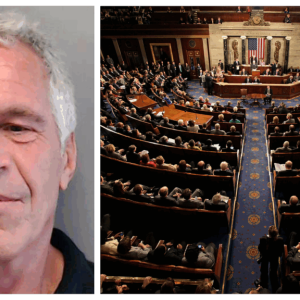White House Press Secretary Karoline Leavitt delivered a detailed briefing on September 18, 2025, addressing mounting concerns over public safety following several high-profile acts of violence across the United States. These incidents, which have dominated headlines in recent weeks, prompted widespread debate about the adequacy of current safety policies and the government’s ability to mitigate escalating threats. Leavitt opened her remarks by acknowledging the seriousness of the situation and emphasizing that the administration is fully aware of the public’s heightened sense of vulnerability. The briefing sought to provide clarity on the federal government’s ongoing and future efforts to strengthen national security.
Throughout the press conference, Leavitt stressed that protecting American citizens remains one of the administration’s highest priorities. She referred to recent attacks that targeted individuals in a variety of settings, illustrating how threats have become increasingly unpredictable. These events, she argued, highlight the importance of expanding preventive capabilities and reinforcing systems that identify signs of potential violence. According to Leavitt, the administration is not waiting for crises to unfold but is actively shaping strategies that address threats at their root. This includes improved data-sharing, community-level intervention programs, and updated methods for assessing credible risks.
A major component of her message centered on enhanced federal support for law enforcement agencies. Leavitt detailed how the administration is providing additional resources to ensure officers, investigators, and emergency response teams can carry out their duties more effectively. These measures include increased funding, access to advanced technological tools, and improved interagency coordination. The goal, she explained, is to reduce response time and strengthen communication between federal, state, and local authorities, ensuring that information flows more freely and that threats are addressed more swiftly.
Leavitt also addressed concerns surrounding the safety of vulnerable groups, including minorities, refugees, and public officials—communities that, she noted, often face disproportionate risks. She underscored the federal government’s obligation to ensure that all citizens feel safe, regardless of their background or position. Part of this responsibility, she argued, involves building stronger relationships between communities and law enforcement. Leavitt urged local leaders and residents to remain vigilant and actively report suspicious activity, emphasizing that public participation is essential in preventing violence and maintaining order.
Experts observing the briefing noted that Leavitt’s remarks signaled a clear and assertive shift toward a more preventative and coordinated national security framework. Analysts believe her comments reflect an administration that intends to confront present-day threats with aggressive preparation rather than reactive measures. The emphasis on interagency collaboration, early detection, and community involvement suggests a holistic vision for public safety—one that balances enforcement with outreach and accountability. Her statements, they argue, show a government seeking to modernize its approach amid evolving security challenges.
In closing, Leavitt reaffirmed the administration’s commitment to safeguarding the nation and reassured the public that significant efforts are underway to create a safer environment for all. Her remarks have since sparked widespread discussion across the country about the role of federal authority, the importance of community engagement, and the need for comprehensive security reforms. By addressing both immediate concerns and long-term strategies, Leavitt’s briefing set the tone for ongoing national dialogue about public safety in an era of increasing unpredictability.





